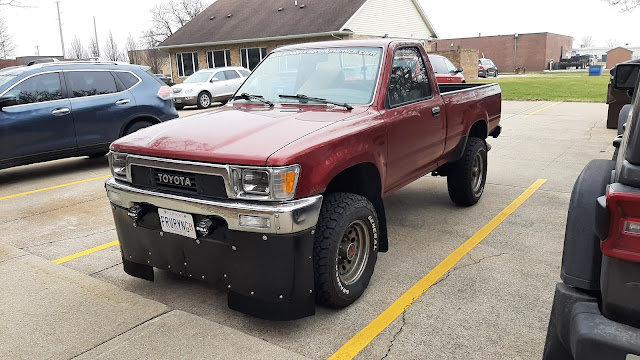Wheel Covers and Base Pressure
Several weeks ago, I wrote about an unusual base pressure
reading while testing various spoiler angles on my car, a
2013 Toyota Prius. Specifically, the pressure at the center of the trunk, at 80
kph, was 0—no relative difference from atmospheric! This is unusual because
there should be negative differential pressure on the rear surface of a
car (its base), where a turbulent wake forms behind it. What was going
on?
Winds were calm that day, a rarity here in the American
Midwest, which may have caused the odd pressure reading. I also had no wheel
covers on the car since I had removed the wheels to have new tires mounted a
few days before. This last observation led me to conduct some tests
to see if the wheel design could be influencing base pressure.
This isn’t an outlandish idea, even if it appears so at
first. Just this year Dr. Thomas Wolf, former head of aerodynamics at Porsche,
published a paper detailing testing of wheel designs on the Porsche Cayenne
which found that the pumping action of the rear wheels strongly influences base
pressure and can reduce drag coefficient as a car goes faster. Could some interaction between the wheels and base pressure be happening on my car? What is the relationship between base pressure
and wheel design, or is there no discernible influence when measured on the
road?
Let’s find out.
Test 1: Constant Speed
At a constant 80 kph, I measured pressure at a high position
(center of license plate--Location 1) and low position (lower part of the bumper cover--Location 2) on
the base of my car with no wheel covers, stock front wheel covers, front and
rear stock covers, and front stock plus rear full covers.
 |
| Top: bare wheel. Middle: Factory wheel cover. Bottom: Full cover. |







Comments
Post a Comment